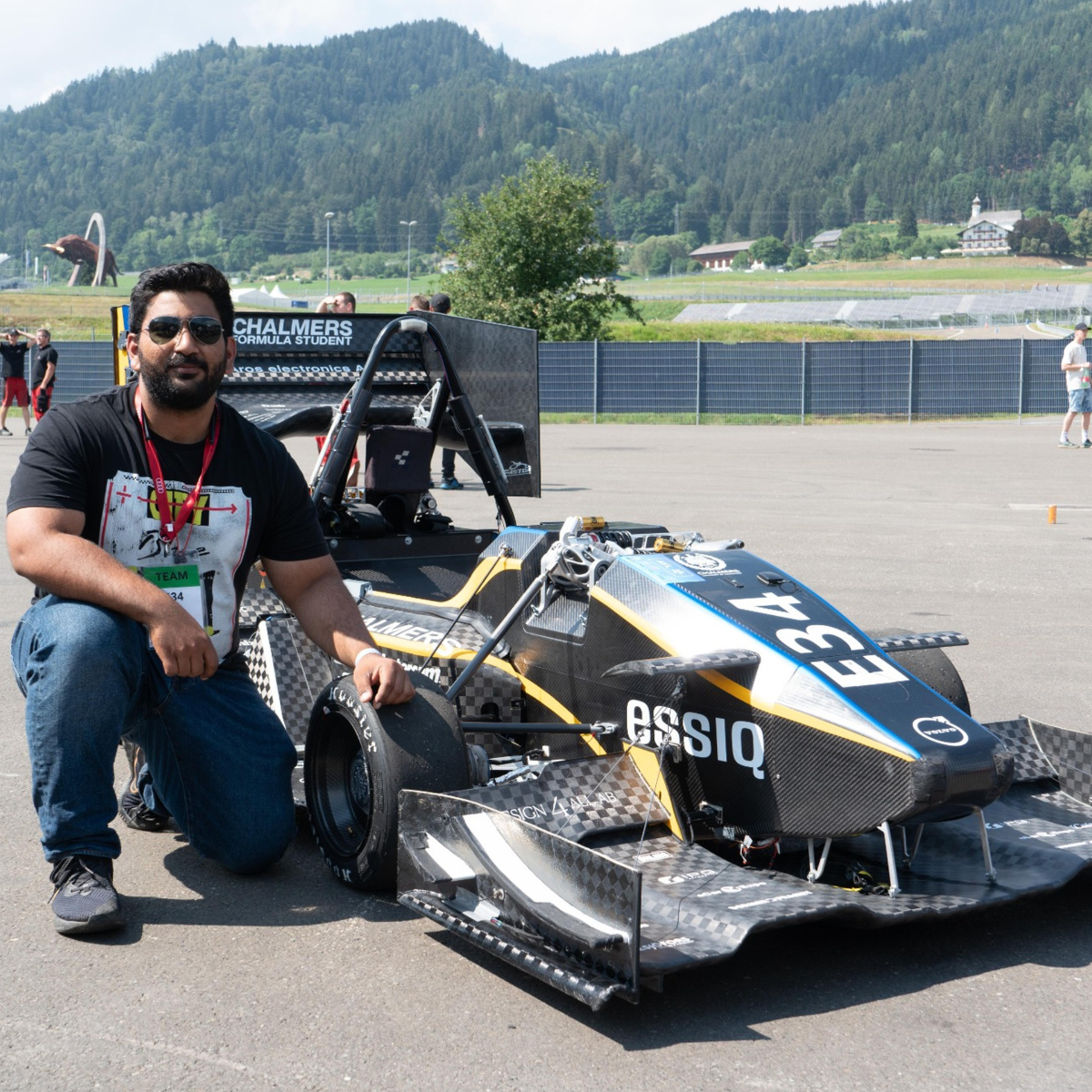News
Meet Shaurya Sharma: Exploring power electronics and inverter development
MEET OUR ENGINEERS
2025 / 04 / 04
A JOURNEY INTO ELECTRICAL ENGINEERING
Shaurya’s path into electrical engineering was not entirely planned from the start. He completed his bachelor’s degree in electrical engineering in North India, but it was only towards the end of his studies that he developed a strong interest in the field. Taking a year off during the COVID-19 pandemic allowed him to explore different areas of electrical engineering, and he became particularly drawn to power electronics and powertrains.
This led him to pursue a master’s degree at Chalmers University of Technology in Gothenburg, Sweden, focusing on power electronics. From the very beginning, he immersed himself in hands-on engineering work. Just 15 days after starting his studies, he joined the Chalmers Formula Student team, where he played a significant role in electrical hardware and powertrain design.
FORMULA STUDENT AND HANDS-ON EXPERIENCE
When Shaurya joined the Chalmers Formula Student team, it was a small group recovering from the challenges of COVID-19, with only 15–20 members working on the entire car. At the time, only three people were handling electrical hardware, making it an intense but rewarding learning experience. He quickly took on significant responsibilities.
During his second year, his role expanded further, contributing to the design and development of in-house inverters and the electrical powertrain architecture. He helped restructure the team, manage projects, and redesign the car’s electrical framework, ensuring a more efficient and well-organised development process. His master’s thesis was also linked to the Formula Student project, focusing on the design and verification of a silicon carbide (SiC) inverter for the race car.
MOVING TO MUNICH AND WORKING AT TEXAS INSTRUMENTS
After completing his studies, Shaurya moved to Germany for his first industry role at Texas Instruments, where he worked as a system engineer specialising in traction inverters. He worked on powertrain architectures for various vehicle types, from light vehicles to heavy-duty applications.
His responsibilities at Texas Instruments included developing system architectures, designing a new control board for the inverter reference design, and conducting functional safety assessments. He also led concept studies and explored ways to enhance the company’s traction inverter technology.
JOINING DEEPDRIVE AND WORKING ON INVERTER DEVELOPMENT
Shaurya had been aware of DeepDrive for some time, particularly through the Formula Student community, as many team members came from similar backgrounds. After researching the company further, he decided to make the move, joining DeepDrive in January 2025 as an electrical hardware engineer.
At DeepDrive, his primary focus has been thermal testing of the inverter, ensuring its performance and reliability. His current responsibilities involves evaluating thermal performance, identifying hotspots, and finding ways to optimize the thermal design. By analysing heat dissipation from different components in the power path, he works to improve efficiency and durability.
Within just the first two months, he has already helped refine PCB layouts, identified design improvements, and contribute to solutions that have led to immediate performance enhancements. The fast-paced environment and hands-on development approach at DeepDrive have been a welcome shift from larger corporate processes.
LIFE OUTSIDE OF WORK
Outside of engineering, Shaurya enjoys powerlifting, hiking, and travelling to new cities. Music is another passion—he has played drums on and off over the years, using it as a way to unwind when time allows. Balancing gym, outdoor activities, and music helps him stay active and engaged outside of work.


